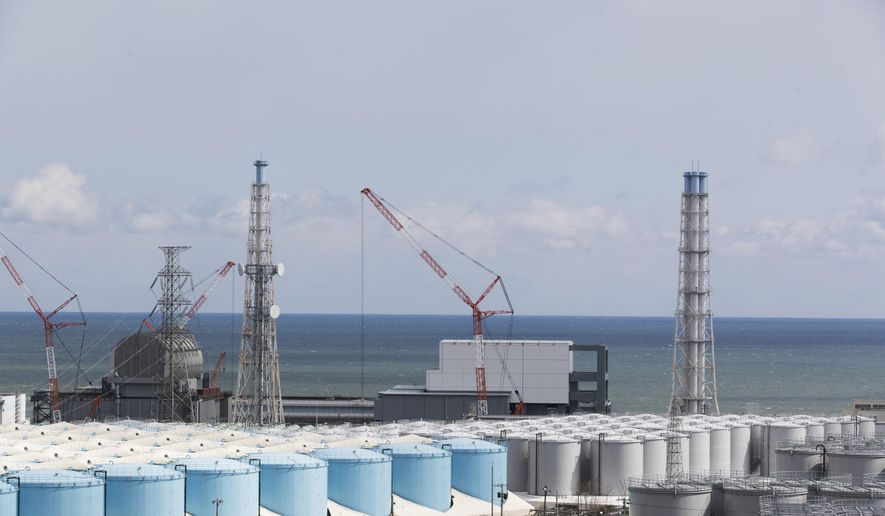TOKYO (AP) - Japan on Tuesday asked the International Atomic Energy Agency for support carrying out the future release of massive amounts of treated but still-radioactive water from the wrecked Fukushima nuclear power plant, most likely into the sea.
Japan wants international atomic experts to help evaluate the methods, handling and facilities ahead of the release, and to provide quality control and environmental monitoring once it begins. Japan’s Economy, Trade and Industry Minister Hiroshi Kajiyama held an online talk with IAEA Director General Rafael Grossi.
Grossi said the IAEA will give full backing to Kajiyama’s request for a safety review of the release of radioactive water into the sea, once Japan makes a final decision. The two sides also agreed to cooperate in the plant’s decommissioning.
The release is expected to start in about two years, part of the plant’s already difficult decommissioning process, which will likely take decades. A government panel’s recommendation that the radioactive water be gradually released into the sea has faced fierce opposition from local residents, and a decision is still pending.
Kajiyama told Grossi that his government is now in the final stage before announcing what to do with the water. Japanese officials have said the country will ensure the highest levels of safety and transparency, in order to gain understanding from the international community about the planned water release.
In 2011, a powerful magnitude 9.0 earthquake and tsunami damaged the Fukushima plant’s cooling systems, causing three reactor cores to melt and nuclear fuel to fall to the bottom of their primary containment vessels.
In the decade since, cooling water has been escaping constantly from the damaged primary containment vessels into the basements of the reactor buildings. To make up for the loss, additional cooling water has been pumped into the reactors to cool the melted fuel remaining inside them. Water is also pumped out and treated, part of which is recycled as cooling water, and the remainder stored in around 1,000 tanks.
Both Tokyo Electric Power Co., which operates the plant, and the government are currently stuck with some 1.24 million tons of radioactive water, while also facing the public’s concerns about radiation and distrust regarding TEPCO’s safety culture.
The operator says the tanks’ 1.37-million-ton storage capacity will be full in 2022, and that tanks will need to be removed to make room to build decommissioning facilities.
As officials struggle to finalize the water removal plan, they say cooperation with outside experts is crucial, and Japan hopes IAEA involvement in safety reviews and monitoring will help increase transparency and public trust.
___
Follow Mari Yamaguchi on Twitter at https://www.twitter.com/mariyamaguchi




Please read our comment policy before commenting.